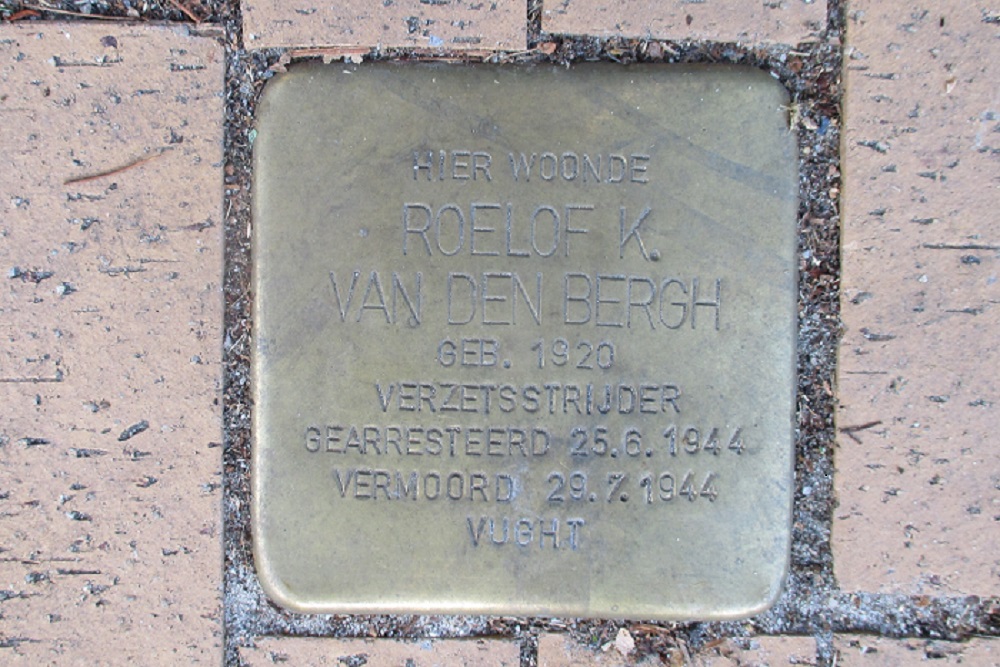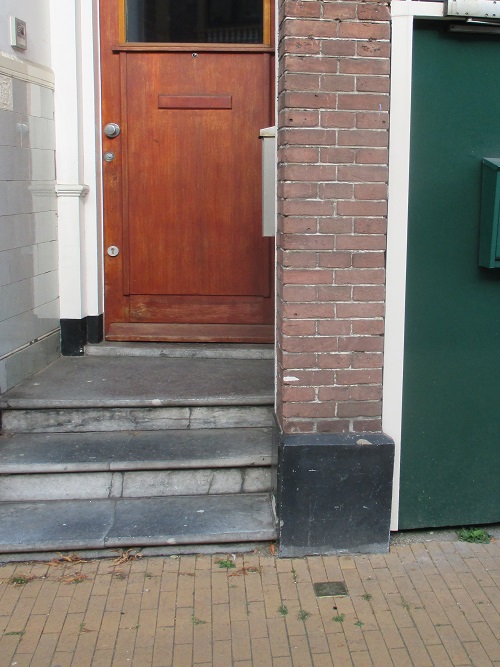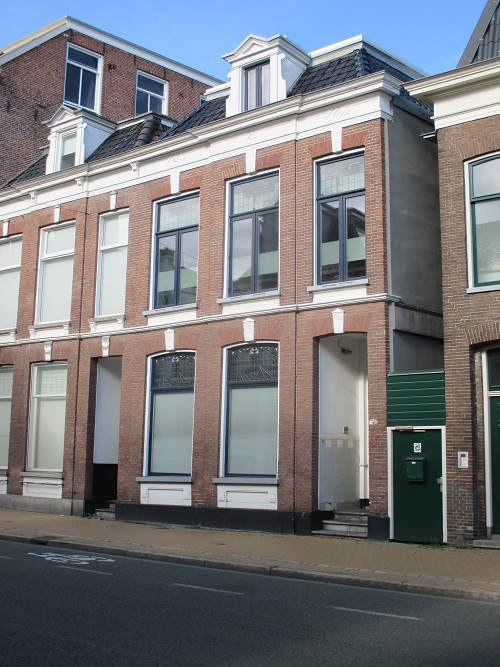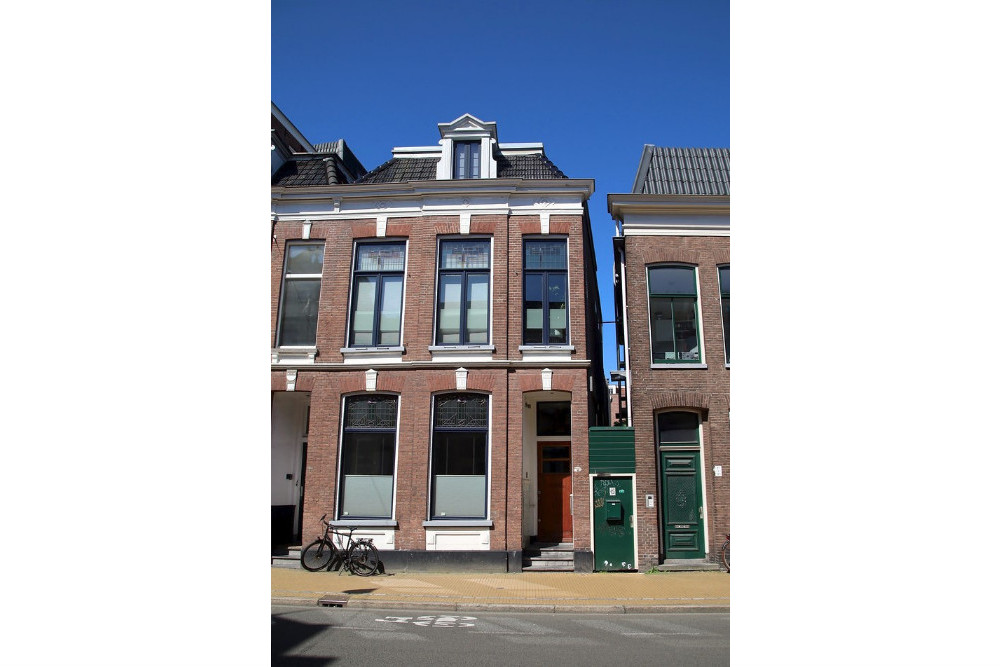Stumbling Stones Stationsstraat 3
This small brass memorial plaque (Stolperstein, Struikelsteen, or stumbling stone) commemorates:
* Roelof K. van den Bergh, born 1920, resistance fighter, arrested 25 June1944, murdered 29 July 1944, Vught.
Background
Roelof Kars van den Bergh, a Dutchman born in Amersfoort, participated in several robberies during the German occupation. Later he joined the Belgian resistance group, White Brigade [Witte Brigade] and worked with Peter van der Smit in accessing weapons.
At the end of May 1944, Peter van der Smit met with Jan Nuyen, a soldier with whom Peter had served in 1940. Peter and his collegues decided Nuyen could be trusted. In June, Peter along with Roelof met Nuyen’s contact person to discuss a weapons drop, and Peter was able to recruit other resistance fighters for the drop. But Nuyen was in contact with the infamous Adriaan Breed in the SD [Sicherheitsdienst, Nazi security service].
The SD infiltrated the group, and it is the SD member Joseph Schreieder (an expert in counterintelligence and misdirection) who suggested the location for the drop. In the end about 30 SD members "participated" – luring Peter’s group, arresting 3 immediately, one of whom convinced Peter and the others that proceeding with the resistance plan was safe. When Peter’s group arrived at the drop site, Roelof was wounded. (Schreieder later claimed that the SD members were unarmed.) The resistance fighters were interrogated – sometimes with another fighter forced to be present to observe how information was extracted. At 05:00 on 29 July 1944, at the execution site just outside of Kamp Vught, 11 resistance fighters were murdered including Peter van der Smit and Roelof van den Bergh.
"Stolpersteine" is an art project for Europe by Gunter Demnig to commemorate victims of National Socialism (Nazism). Stolpersteine (stumbling stones) are small, 10x10cm brass plaques placed in the pavement in front of the last voluntary residence of (mostly Jewish) victims who were murdered by the Nazis. Each plaque is engraved victim’s with the name, year of birth, and place (mostly a concentration camp) and date of death. By doing this, Gunter Demnig gives an individual memorial to each victim. One stone, one name, one person. He cites the Talmud: "A human being is forgotten only when his or her name is forgotten."
Do you have more information about this location? Inform us!
Source
- Text: Nico Nienhuis & Anne Palmer
- Photos: Nico Nienhuis (1, 2, 3), Suzanne Matrosov-Vruggink (4)
- Ukrant.nl/stolpersteine
- National Monument, Kamp Vught: Roelof Kars van den Bergh
- Stolpersteine.eu
Nearby
Point of interest
- Bullet Impacts Gedempte Zuiderdiep 133 - Groningen
- Hiding Place Der Aa Church - Groningen
- Bullet Impacts Villa Heymans - Groningen
Monument
- Monument The Portal - Groningen
- Memorial Post Office Groningen - Groningen
- Memorial Coehoornsingel Groningen - Groningen
Cemetery
- Commonwealth War Graves Groningen - Groningen
- Dutch War Graves Zuiderbegraafplaats - Groningen
- Dutch War Graves RC Churchyard - Groningen
Remembrance Stone
- Stumbling Stones Oudeliedengesticht - Groningen
- Stumbling Stones Gedempte Zuiderdiep 113 - Groningen
- Stumbling Stone Folkingestraat 41 - Groningen
Fortification
- German Shelter Suikerunie Factory - Groningen
- German Tobruk Bunker Suikerunie Factory - Groningen
- German Bunker Haren - Haren







